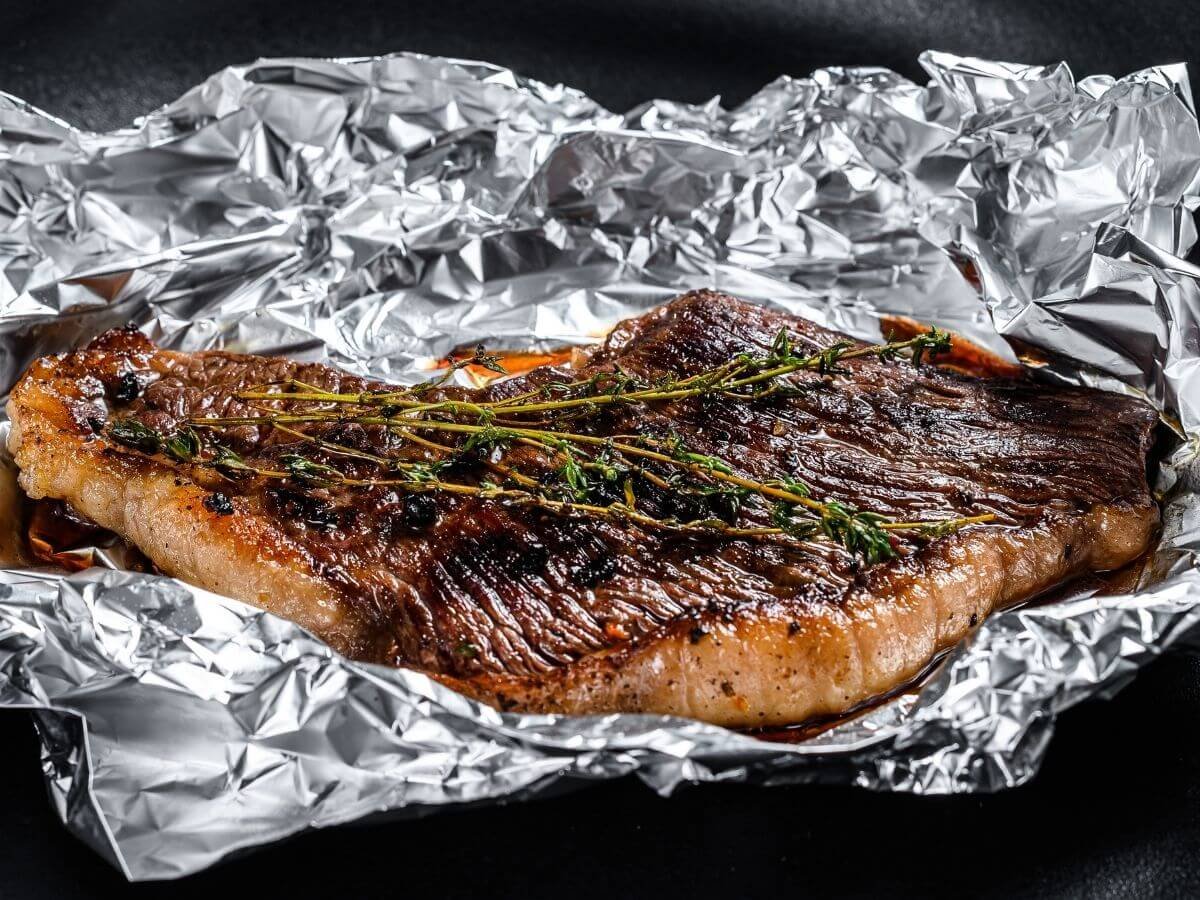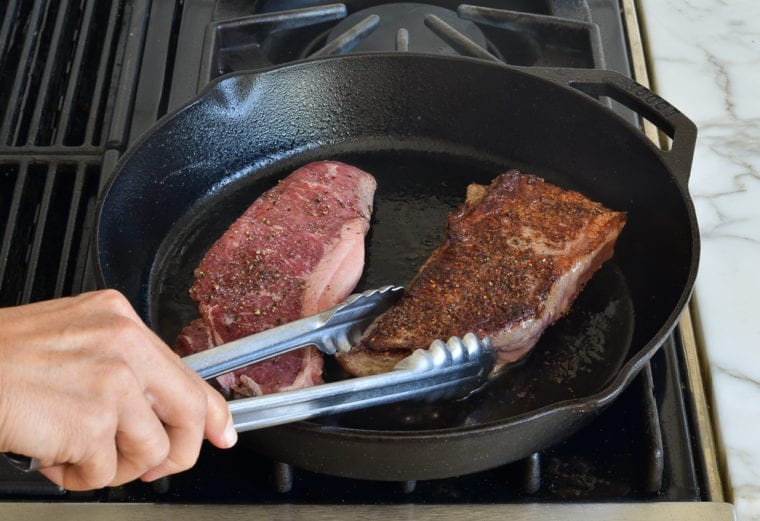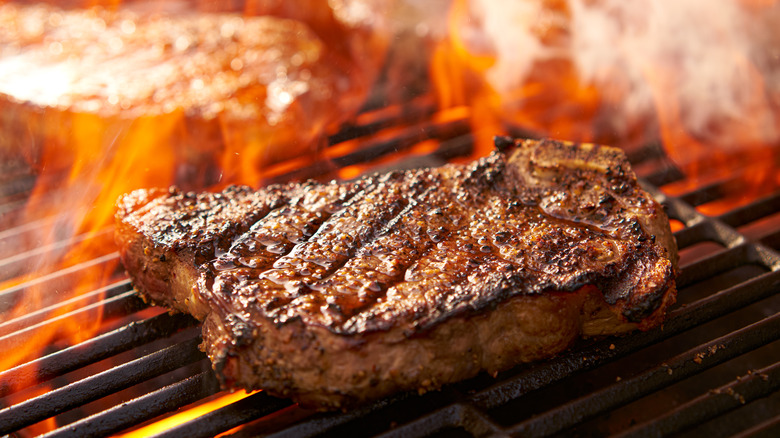How to Cook Steak in a Cast Iron Skillet: The Ultimate Guide for Perfect Results
Written By James Morgan
When it comes to cooking steak, there's simply no better method than using a cast iron skillet. In this exhaustive guide on how to cook steak in a cast iron skillet, we'll unveil the secrets and techniques that will help you achieve perfectly seared and juicy steaks every single time. Whether you're a novice in the kitchen or a seasoned barbecue enthusiast, this article is designed to resonate with everyone.

The Charm of a Cast Iron Skillet
The cast iron skillet is celebrated not just for its superb heat retention, but also for its ability to create a perfect Maillard reaction on the surface of the steak. This reaction is essential for browning and enhances the flavor profile, taking your steak to a whole new level. Additionally, a well-seasoned cast iron skillet can be an heirloom piece that can last generations, making it a wonderful investment for any cooking enthusiast.
Why Choose a Cast Iron Skillet?
How to cook steak in cast iron skillet involves understanding why this cookware is revered globally. Beyond its excellent heat conductivity, cast iron skillets provide a natural non-stick cooking surface that can elevate flavors. Unlike other pans, cast iron skillets can go seamlessly from stovetop to oven, allowing for versatile cooking options. Furthermore, they are incredibly durable, capable of withstanding incredibly high temperatures without warping or losing their integrity.
In addition, cooking your steak in a cast iron skillet imparts a unique flavor characteristic that cannot be mimicked by other cookware materials. The combination of high heat and the seasoning on the skillet creates a depth of flavor that will impress your family and friends alike.

Gathering the Right Equipment
Before we get into the nitty-gritty of how to cook steak in a cast iron skillet, it's essential to gather all the necessary tools and ingredients. Here's what you'll need:
- Quality steak (ribeye, filet mignon, or sirloin works best)
- Cast iron skillet
- Knife for slicing
- Cutting board for resting and slicing the steak
- Salt and pepper for seasoning
- Oil with a high smoke point (canola, avocado, or grapeseed oil)
- Optional: garlic, butter, or fresh herbs for additional flavor
Having the right tools makes a world of difference. For the knife, choose one that is sharp and comfortable to hold, while your cutting board should provide a stable surface for resting and slicing your beautifully cooked steak.

Choosing the Perfect Steak
The kind of steak you choose plays a vital role in the overall quality of your meal. The marbling, cut, and thickness all drastically affect the tenderness and flavor. Ribeye is often cited as the king of steaks due to its rich marbling, which translates into flavor and tenderness. Filet mignon offers a buttery texture that melts in your mouth, while sirloin is a leaner option with a firmer texture. Your choice of steak will ultimately depend on personal preference, but don't hesitate to experiment between different cuts.

Preparing Your Steak
Preparation is key! Start by removing your steak from the refrigerator and letting it come to room temperature. This step is essential for ensuring even cooking. While your steak is resting, season it generously with salt and pepper. Consider using a seasoning blend tailored to your liking or simply enhancing the natural flavors with fresh herbs and garlic. This will allow the spices to penetrate better, leading to a more flavorful steak.
Cooking Your Steak in a Cast Iron Skillet
The temperature of your skillet is crucial when learning how to cook steak in a cast iron skillet. Preheat the skillet over medium-high heat and introduce your oil, ensuring it reaches a shimmering state without smoking. Once your skillet is adequately hot, add the steak. It should sizzle upon contact. Avoid overcrowding the skillet, as this will reduce the temperature and result in steaming rather than searing. Depending on the thickness of your steak and your doneness preference, cooking times will vary. Aim for about 3-4 minutes per side for medium-rare, flipping only once to achieve that necessary crust.
During the last minute of cooking, consider adding butter along with herbs such as thyme or rosemary to infuse even more flavor. Tilt the skillet slightly and use a spoon to baste the steak with the melted butter, enriching the taste further.
Checking for Doneness
Another critical component of mastering how to cook steak in a cast iron skillet is understanding doneness. While a meat thermometer is the most accurate way to ensure perfect outcomes, here are some general guidelines based on internal temperatures:
- Rare: 125F (52C)
- Medium-rare: 135F (57C)
- Medium: 145F (63C)
- Medium-well: 150F (66C)
- Well done: 160F (71C)
After removing the steak from the skillet, allow it to rest for at least 5-10 minutes. This resting period is crucial, allowing juices to redistribute back into the meat for a juicy finish.
Cutting and Serving Your Steak
Once your steak has adequately rested, it's time for the cutting and serving process. Using a sharp knife on a stable cutting board, slice against the grain for maximum tenderness. Remember to serve your steak warm and consider pairing it with sides like roasted vegetables, mashed potatoes, or a fresh salad to round out your meal. For an additional layer of richness, a dollop of compound butter or a drizzle of chimichurri sauce can elevate your steak experience.
Clean-Up and Maintenance
Proper care of your cast iron skillet ensures that it retains its seasoned properties and continues to deliver delicious meals for years. After allowing it to cool down, avoid soaking it in water. Instead, use a spatula to remove any residue. For stubborn bits, scrub with coarse salt and a little water. Use cookware cleaner along with this method for a more thorough cleanse.
Sealing the Deal with Seasoning
Seasoning your skillet helps seal in flavor, develop a non-stick surface, and protect it from rust. Simply apply a thin layer of vegetable oil and heat it overcome medium for an hour, allowing the oil to bind to the cast iron and create a protective layer.
Conclusion: Perfecting Your Technique
Having educated yourself through this detailed guide on how to cook steak in a cast iron skillet, you now hold the keys to creating expertly cooked steak at home. As you continue to practice, youll refine your technique and discover the mastery of flavors that can only come from using quality cookware and the right approach to preparation and cooking.
Don't forget to explore suitable cookware options that can complement your culinary journey, such as a griddler, or invest in high-quality cutting boards and knives to enhance your efficiency and precision while cooking. Just as important is maintaining your tools, for which using effective cookware cleaner and cutting board oil will protect your equipment and keep them in stellar condition.
As an Amazon Associate, I earn from qualifying purchases.



